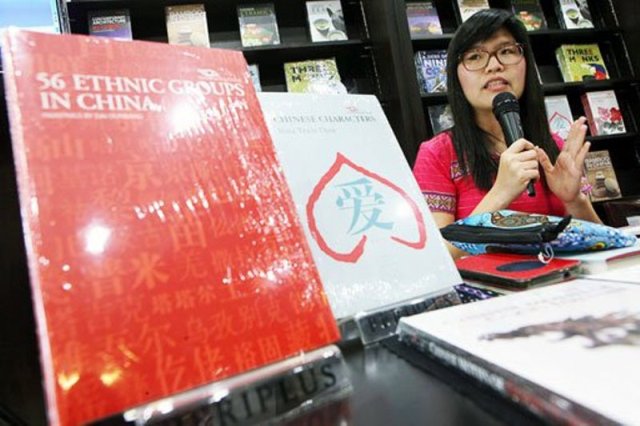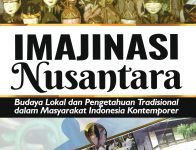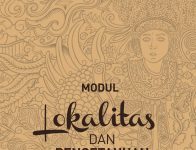The Jakarta Post – Symphony Akelba Christian, a Chinese literature lecturer at Bunda Mulia University, talks during a recent public discussion entitled “Historical Asia: China” held by the 1001 Indonesia community and Periplus Bookstores in Kemang, South Jakarta. The community and Periplus have organized a year-long program called “The Historical Asia: Indonesia-China-India” that started the season with a look at books on China.
A community explores the cultural exchange among three of Asia’s biggest nations through literature.
There is no mistaking the sharp resemblance between the cultural makeup of Indonesia and the cultural heritage of China and India. It’s a fact that encourages Indonesianists — historians and those concerned with the richness and diversity of Indonesian culture — to delve deeper into the ongoing history of the Asian powers.
“There are historians and specialists who believe that Asia’s civilizations continue to evolve and to interact with each other,” said Henry Thomas Simarmata, a member of the 1001 Indonesia community.
“The cultural diversity of Indonesia is still growing and relevant.”
For centuries, Indonesia has been known as a hub of international trade in a continent dominated by Chinese and Indian merchants. This relationship has evolved into modern interaction, providing fertile ground for the ongoing assimilation of civilization.
To encourage a public discussion and intensive studies on the matter, the community and bookstore Periplus is organizing “The Historical Asia: Indonesia-China-India”, a year-long program that began by exploring books on China.
In a discussion at the Periplus outlet in Kemang, South Jakarta, on May 11, 1001 Indonesia picked five books from the Discovering China series, published by Shanghai Press, China.
“These books have an Indonesian connection in them, containing historical entries that are still open for further discussion,” said Henry, an international law expert and a speaker at the discussion.
“They are of a compact format and suitable as an introduction for first-time readers [on the subject] that would pique their interest to find out more.”
In 56 Ethnic Groups in China ( 2010 ), readers are introduced to aspects of each of the nation’s groups, revealed through detailed observation of characteristics, customs, habits and apparel.
The illustrations, by Dai Dunbang, display remarkable techniques using both ink and color. The predominantly Muslim ethnic group in China, the Hui, is described as having come to China from Central Asia, Persia and Arabia in the 13th century, among the descendants of Arabian and Persian merchants who migrated to China after the 7th century.
The Hui ethnic group, with a population of 8.6 million scattered across China according to the 1990 census, has also mixed with members of other ethnic groups, including the Han, Mongol and Uygur.
The attendants at the discussion were impressed by the similarities between the traditional Indonesian kebaya and sanggul (hairbun) style and the costumes and hairdos of the Dai women in Yunnan province, while the Hani clothing and accessories are similar in style to those worn by the Nias and Dayak people of Indonesia.
Also discussed were Chinese Architecture by Wang Qijun ( 2011 ) and Chinese Motifs of Good Fortune, with photographs by Lui Shenghui and text by Zhu Wen ( 2011 ), offering detailed references and insights into philosophies about nature, religion, morality and government as well as reflecting social values, cultural and political dynamics over the centuries.
Henry said some Indonesian communities had adopted elements of Chinese architecture, such as the three-level philosophy, with each level reflecting the relationship between nature, human beings and the gods, the bilateral symmetry of rooms as well as the curved roof.
“We can see the resemblance in traditional houses of the Toraja, Batak and Balinese people. Even the Borobudur Temple adopts the three-level philosophy,” he said. “The shingle roof of Demak Mosque can also be referred to as Chinese architecture.”
The motifs, which can still be seen today on porcelain, textiles and furniture, are symbols representing prosperity, health, fortune or happiness, which, not surprisingly, are also found in Javanese batik and wooden furniture.
Another speaker at the discussion, Symphony Akelba Christian, a Chinese literature lecturer at Bunda Mulia University, said the fourth book, Chinese Characters by Nina Train Choa (2008), provided information about ancient Chinese civilization and its historical connection with contemporary Chinese writing.
“It gives us insight into the concept of life and death as well as social norms in society just from the letter,” she said.
50 Amazing Places in China, with text by Dong Huai ( 2010 ), takes readers on a stroll through the most magnificent wonders of the world in the landscape of China and its human treasures.
There are entries about the Mogao Grottoes, also known as the Thousand Buddha Caves, on the slope of Mingsha Mountain, southeast of Dunhuang, where some of China’s greatest Buddhist art treasures are kept; the legendary Terracotta Army, Sky Lake of Changbai Mountain, and, of course, the Great Wall.
The travel guide serves as an outline for any trip to China, as the stunning sites — some manmade, others gifts of nature — are grouped by regions.
“We hope readers find these books helpful in acquiring a new perspective on looking at Indonesia’s heritage in a comprehensive way and realizing that the cross-fertilization of civilization continues, regardless of the political landscape between the countries,” said Henry.
Another book discussion, Historical Asia: China, will held on May 26 at the Islamic University of Indonesia in Yogyakarta; while Historical Asia: India will begin in October.
Sumber: The Jakarta Post










